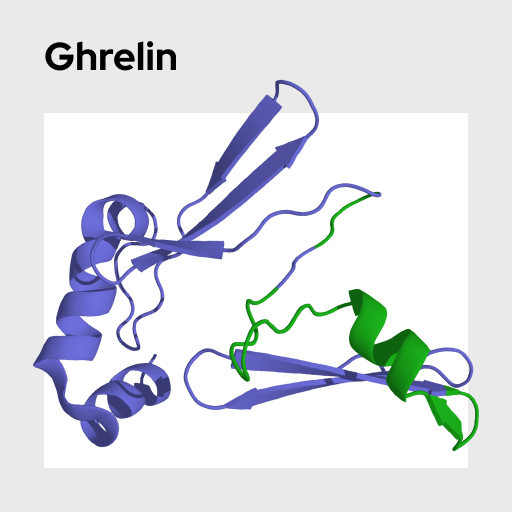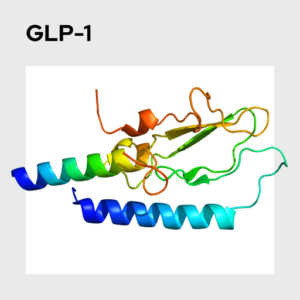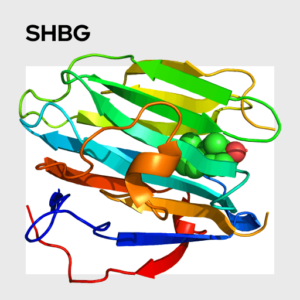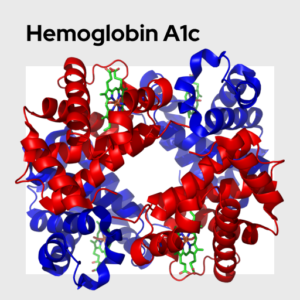Ghrelin
Ghrelin is a hormone produced primarily in the stomach. It is termed the ‘hunger hormone’ because it stimulates appetite, increases food intake, and promotes fat storage. It also stimulates the release of growth hormone. When administered to humans, ghrelin increases food intake by up to 30%; it circulates in the bloodstream and acts at the hypothalamus, an area of the brain crucial in regulating eating behavior. Ghrelin has also been shown to act on regions of the brain involved in reward processing, such as the amygdala and mesolimbic dopamine pathway.
Name: Ghrelin
Category: Hunger
Type of Test: Blood
Ghrelin (lenomorelin, GHRL), commonly known as the "hunger hormone," is a peptide hormone that is release in response to gastric emptying. It binds to receptors in the arcuate nucleus of the hypothalamus, stimulating appetite. Ghrelin is primarily synthesized in the enteroendocrine cells of the gastrointestinal tract. Specifically, it is produced and secreted by the fundus of the stomach. However, small amounts of ghrelin are secreted by the small intestine, pancreas, and brain regions associated with homeostatic control. Ghrelin is synthesized in a non-acylated form, but it is present in the body in both acylated and non-acylated forms. The release of ghrelin is strongly associated with feeding behaviors, with plasma levels reaching their peak prior to a meal.
While ghrelin is best known for stimulating of hunger, food intake, fat deposition, and growth hormone release, it also plays a role in regulating glucose homeostasis and energy expenditure, cardiovascular health, muscular development, bone formation and metabolism, and cancer development and progression. Ghrelin is recruited when energy availability is low and helps the body maintain energy homeostasis. Ghrelin is also thought to play a role in glucose homeostasis by inhibiting insulin secretion when energy levels are low and may contribute to insulin resistance in metabolic disorders.
Abnormalities in plasma levels of ghrelin are associated with obesity, anorexia nervosa, and chronic stress. Furthermore, ghrelin has also been implicated in the regulation of reward sensitivity. Ghrelin levels are typically measured after a fasting period of at least 3 hours, as ghrelin levels decrease considerably after food intake.
Pradhan, G., Samson, S. L., & Sun, Y. (2013). Ghrelin. Current Opinion in Clinical Nutrition and Metabolic Care, 16, 619-624. https://doi.org/10.1097/mco.0b013e328365b9be
Ralevski, E., Shanabrough, M., Newcomb, J., Gandelman, E., Hayden, R., Horvath, T. L., & Petrakis, I. (2018). Ghrelin is related to personality differences in reward sensitivity and impulsivity. Alcohol and Alcoholism, 53, 52-56. https://pubmed.ncbi.nlm.nih.gov/29136100/
Kojima, M., & Kangawa, K. (2005). Ghrelin: Structure and Function. Physiological Reviews, 85, 495-522. https://doi.org/10.1152/physrev.00012.2004
Stone, L. A., Harmatz, E. S., & Goosens, K. A. (2020). Ghrelin as a Stress Hormone: Implications for Psychiatric Illness. Biological Psychiatry, 88, 531-540. https://doi.org/10.1016/j.biopsych.2020.05.013






